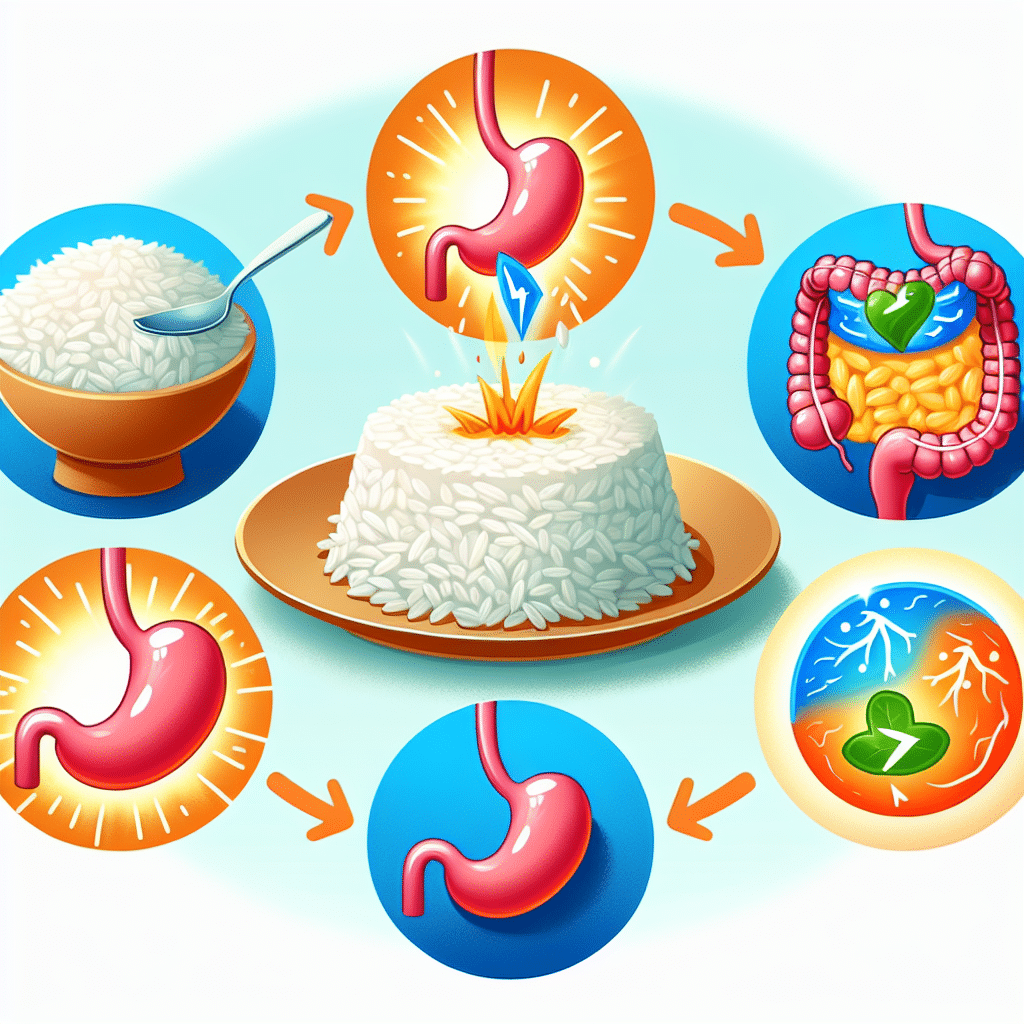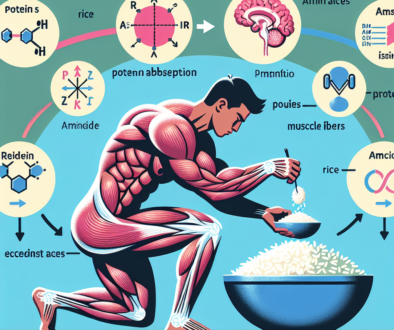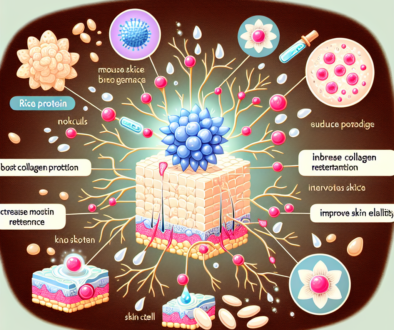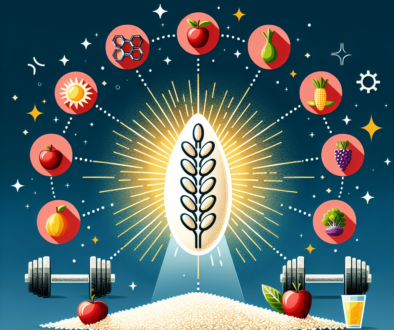Is Sticky Rice Easy To Digest?
-
Table of Contents
- Sticky Rice Digestibility: A Comprehensive Analysis
- Nutritional Profile of Sticky Rice
- Sticky Rice vs. Other Rice Varieties
- Impact on Digestive Health
- Preparation and Consumption Tips
- Case Studies and Research
- Conclusion: Is Sticky Rice Easy to Digest?
- Discover ETprotein’s High-Quality Protein Products
Sticky Rice Digestibility: A Comprehensive Analysis

Sticky rice, also known as glutinous rice or sweet rice, is a staple in many Asian cuisines, known for its unique texture and the ability to be molded into various shapes. Despite its name, sticky rice does not contain gluten; rather, it is characterized by its high amylopectin content, which contributes to its stickiness. The digestibility of sticky rice is a topic of interest for many health-conscious individuals and those with digestive concerns. This article delves into the ease of digestion of sticky rice, examining its nutritional components, how it compares to other rice varieties, and its impact on the digestive system.
Nutritional Profile of Sticky Rice
Understanding the nutritional makeup of sticky rice is essential to assess its digestibility. Sticky rice is primarily composed of carbohydrates, with a small amount of protein and negligible fat. The key factor that differentiates sticky rice from other types of rice is its starch composition. It is rich in amylopectin, a highly branched starch molecule, which makes it easier to break down during digestion compared to amylose, a linear starch molecule found in higher quantities in long-grain rice varieties.
- High in carbohydrates
- Low in protein
- Minimal fat content
- Rich in amylopectin starch
Sticky Rice vs. Other Rice Varieties
When comparing sticky rice to other rice varieties, such as brown rice or basmati, the glycemic index (GI) is a crucial factor. The GI measures how quickly a food raises blood sugar levels. Sticky rice has a higher GI than many other types of rice, which means it can cause a more rapid increase in blood glucose levels. This is due to the high amylopectin content, which is more readily digested and absorbed. However, this does not necessarily mean it is harder to digest; in fact, the opposite may be true.
- Higher glycemic index than other rice varieties
- Rapid increase in blood glucose levels
- May be digested and absorbed more quickly
Impact on Digestive Health
The digestibility of sticky rice can be influenced by several factors, including individual digestive health, portion size, and preparation methods. For most people, sticky rice is easily digested due to its high amylopectin content. However, for those with certain health conditions, such as diabetes, the quick absorption and high GI may be a concern.
Additionally, sticky rice is often consumed in dishes that include other ingredients, such as fats and proteins, which can slow down the digestive process. This combination can be beneficial for individuals seeking a more gradual release of energy.
- Generally easy to digest for most people
- High GI may be a concern for individuals with diabetes
- Often consumed with other macronutrients that can moderate digestion
Preparation and Consumption Tips
To optimize the digestibility of sticky rice and mitigate any potential negative effects on blood sugar levels, consider the following tips:
- Pair sticky rice with fiber-rich vegetables to slow digestion and stabilize blood sugar.
- Combine with lean proteins to create a balanced meal that is satisfying and less likely to cause blood sugar spikes.
- Practice portion control to manage carbohydrate intake and overall caloric consumption.
- Choose traditional cooking methods, such as steaming, which preserve the natural texture and may aid in digestibility.
Case Studies and Research
Several studies have investigated the digestibility of sticky rice and its effects on health. For instance, research has shown that despite its high GI, sticky rice can be part of a balanced diet when consumed in moderation and combined with other macronutrients. Additionally, studies on the glycemic response have indicated that the body’s reaction to sticky rice can vary based on individual metabolic differences and the overall composition of the meal.
It’s important to note that while sticky rice is generally considered easy to digest, those with specific dietary restrictions or health conditions should consult with a healthcare professional or a registered dietitian to determine its suitability for their diet.
Conclusion: Is Sticky Rice Easy to Digest?
In conclusion, sticky rice is typically easy to digest due to its high amylopectin content, which allows for quicker starch breakdown during digestion. However, its high glycemic index means that it can rapidly increase blood sugar levels, which may be a concern for some individuals. By incorporating sticky rice into a balanced diet and consuming it alongside other macronutrients, its digestibility can be optimized, and its impact on blood sugar can be moderated.
The key takeaways for those considering including sticky rice in their diet are to be mindful of portion sizes, combine it with other nutrients, and consider individual health needs. With these considerations in mind, sticky rice can be a delicious and easily digestible component of many meals.
Discover ETprotein’s High-Quality Protein Products
If you’re looking to complement your diet with high-quality protein sources, consider exploring ETprotein’s range of organic bulk vegan proteins. Their products, including Organic rice protein and other plant-based proteins, are characterized by a neutral taste, non-GMO, and allergen-free attributes. With L-(+)-Ergothioneine purity over 98%, ETprotein caters to various industries, ensuring that you have access to the best protein supplements to support your dietary needs.
Whether you’re involved in sports nutrition, weight management, or simply seeking to enhance your overall health and wellness, ETprotein’s offerings provide comprehensive solutions to meet all your protein requirements. Contact ETprotein today to sample their products and elevate your nutritional intake.
About ETprotein:
ETprotein, a reputable protein and L-(+)-Ergothioneine (EGT) Chinese factory manufacturer and supplier, is renowned for producing, stocking, exporting, and delivering the highest quality organic bulk vegan proteins and L-(+)-Ergothioneine. They include Organic rice protein, clear rice protein, pea protein, clear pea protein, watermelon seed protein, pumpkin seed protein, sunflower seed protein, mung bean protein, peanut protein, and L-(+)-Ergothioneine EGT Pharmaceutical grade, L-(+)-Ergothioneine EGT food grade, L-(+)-Ergothioneine EGT cosmetic grade, L-(+)-Ergothioneine EGT reference grade and L-(+)-Ergothioneine EGT standard. Their offerings, characterized by a neutral taste, non-GMO, allergen-free attributes, with L-(+)-Ergothioneine purity over 98%, 99%, cater to a diverse range of industries. They serve nutraceutical, pharmaceutical, cosmeceutical, veterinary, as well as food and beverage finished product distributors, traders, and manufacturers across Europe, USA, Canada, Australia, Thailand, Japan, Korea, Brazil, and Chile, among others.
ETprotein specialization includes exporting and delivering tailor-made protein powder and finished nutritional supplements. Their extensive product range covers sectors like Food and Beverage, Sports Nutrition, Weight Management, Dietary Supplements, Health and Wellness Products, and Infant Formula, ensuring comprehensive solutions to meet all your protein needs.
As a trusted company by leading global food and beverage brands and Fortune 500 companies, ETprotein reinforces China’s reputation in the global arena. For more information or to sample their products, please contact them and email sales(at)ETprotein.com today.














